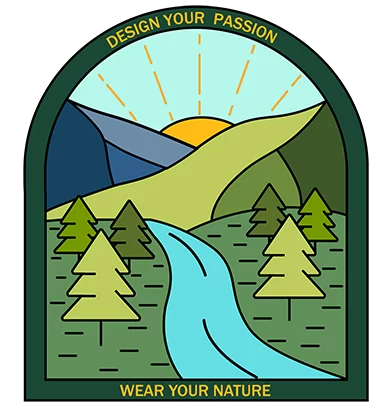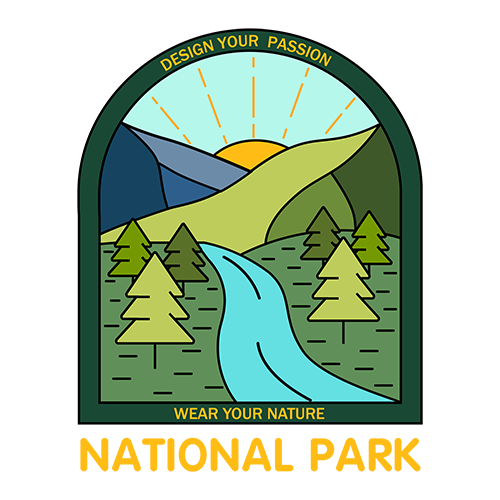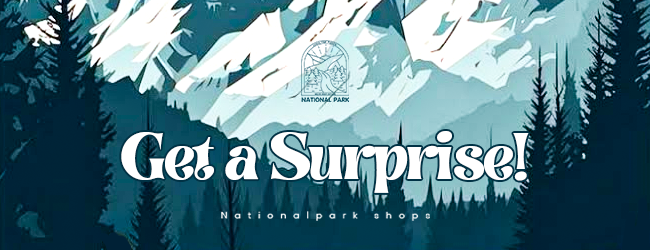Let’s play a quick geography game. Close your eyes and imagine yourself surrounded by bubbling mud pots, vibrant hot springs, and the raw, untamed beauty of the American West. You’re in Yellowstone National Park, that’s right!
But here’s the twist: can you pinpoint the state you’re standing in? It’s a question that often stumps even seasoned travelers, and for good reason! Come along with me and nationalparkshops.com on a journey to discover the surprisingly complex answer to the question: What state is Yellowstone National Park in? Get ready to explore the park’s wonders and uncover a fascinating geographical fact or two along the way!
Where is Yellowstone National Park?
Yellowstone National Park is located primarily in Wyoming, with portions extending into Montana and Idaho. The park covers an area of approximately 3,472 square miles (8,991 square kilometers). Specifically, about 96% of Yellowstone is situated in Wyoming, 3% in Montana, and 1% in Idaho. This unique distribution makes Yellowstone a significant natural treasure spanning three states.
This is what I think is the perfect answer to the question “What state is Yellowstone National Park in?”.
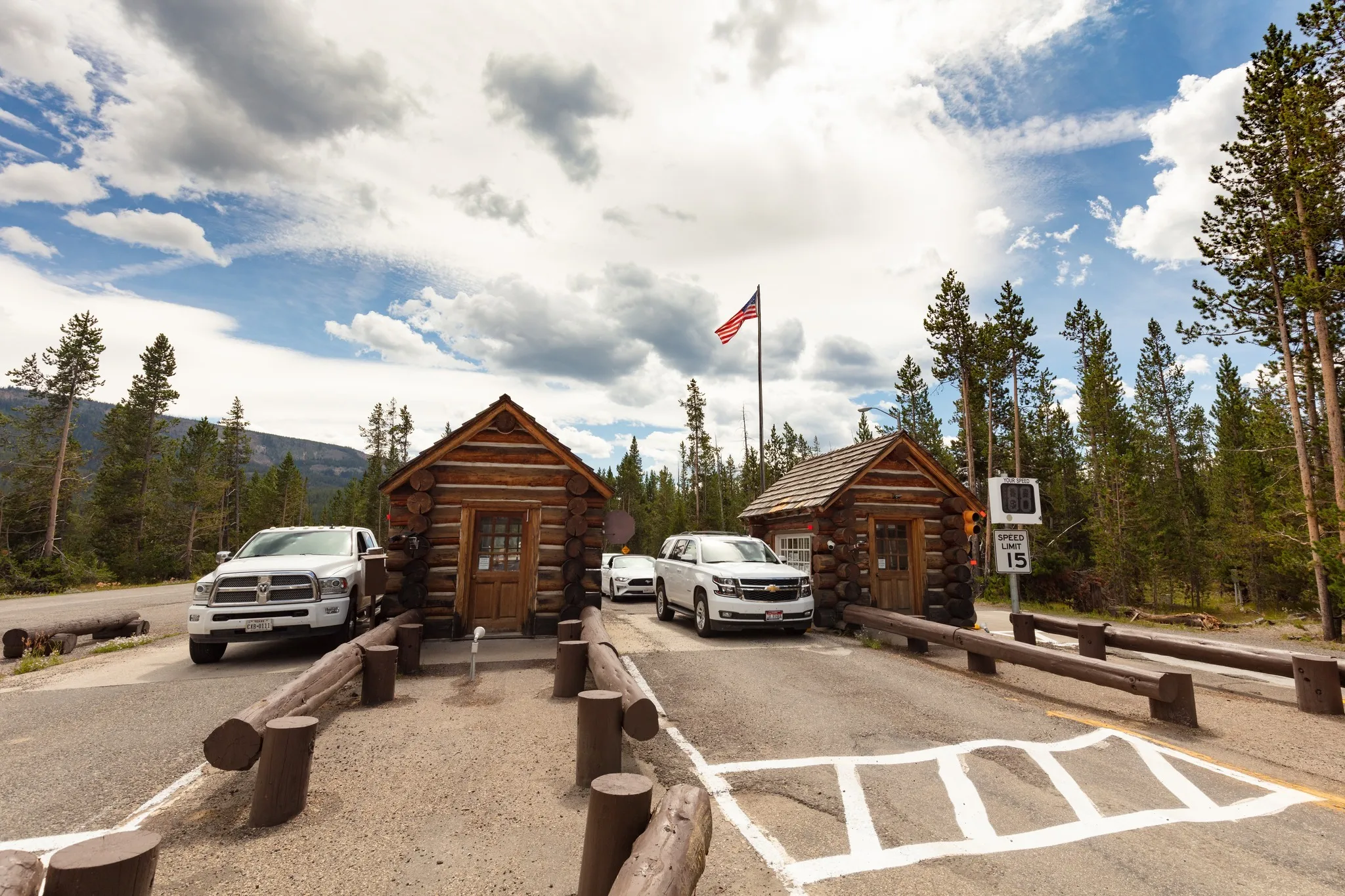
===>> How To Get To Yellowstone National Park
Explore the wild beauty of Yellowstone with our uniquely designed t-shirts!
Featuring exclusive designs inspired by the iconic landscapes of the park, these tees are perfect for your next outdoor adventure or to make a bold style statement. Crafted for comfort and durability, each piece highlights your love for exploration and nature. Available exclusively on Amazon, brought to you by National Park Shops – your guarantee of authentic, high-quality apparel. Grab yours today and wear your Yellowstone pride!
In which state is most of Yellowstone located?
In fact, approximately 96% of the park’s land area is situated within Wyoming’s borders. This makes Wyoming the heart of Yellowstone, where visitors can find some of the park’s most famous attractions, including Old Faithful, the Grand Prismatic Spring, and Mammoth Hot Springs.
While Wyoming holds the majority of Yellowstone, the park also extends into Montana and Idaho. About 3% of the park lies in Montana, primarily in the northern regions, while a mere 1% is located in Idaho, primarily in the western part of the park. These small portions still offer unique experiences and access points for visitors looking to explore different aspects of Yellowstone.
Wyoming: The Heart of Yellowstone
What state is Yellowstone National Park in? Can’t say it’s all Wyoming, but Wyoming is like the heart of Yellowstone National Park.
As the state that cradles the largest portion of Yellowstone National Park, Wyoming boasts a front-row seat to some of the park’s most awe-inspiring spectacles. Old Faithful, the geyser that needs no introduction, erupts with clockwork precision in Wyoming, captivating visitors with its powerful bursts of steaming water. Nearby, the Grand Prismatic Spring, a kaleidoscope of vibrant colors, shimmers like a giant, natural stained-glass window. And then there’s Mammoth Hot Springs, a surreal landscape of travertine terraces sculpted by centuries of flowing hot water, a testament to the park’s geothermal power.
Wyoming offers multiple gateways to Yellowstone’s wonders. The West Entrance, a popular starting point, leads you into the heart of the park, putting you within easy reach of Old Faithful, the Upper Geyser Basin, and the iconic Biscuit Basin. The South Entrance, a route favored by those seeking a scenic drive, offers access to the Grand Canyon of the Yellowstone, where the Yellowstone River carves its way through dramatic rock formations. And finally, the East Entrance is a gateway to the Lamar Valley, a haven for wildlife enthusiasts, where you’re likely to spot bison, elk, wolves, and even the elusive grizzly bear. That’s why many people mistakenly think that Yellowstone is in Wyoming when asked: “What State Is Yellowstone National Park In”.
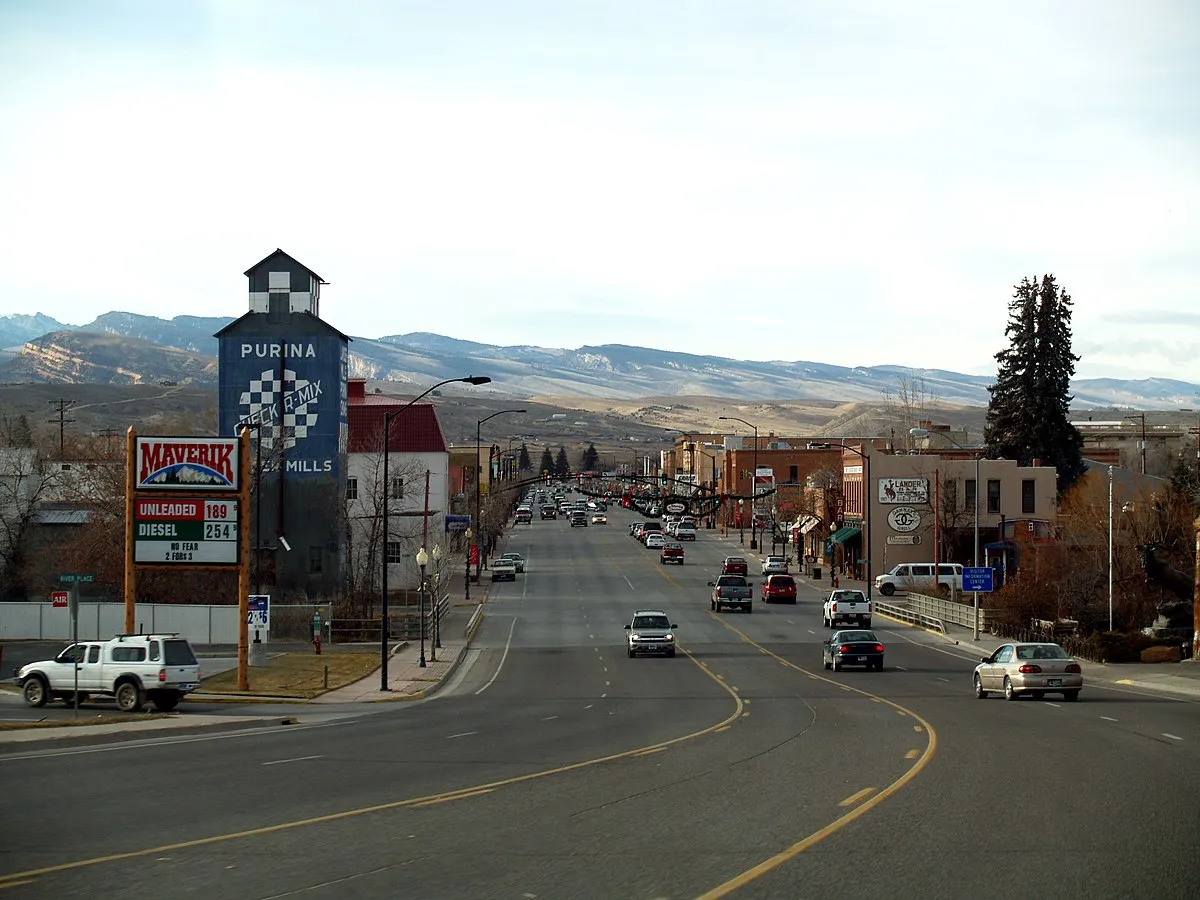
Read More: Top 15 Hotels Near Yellowstone National Park for an Unforgettable Stay
Montana: The Northern Edge of Yellowstone
Montana remains one of the answers to the question “What state is Yellowstone National Park in?”. Montana plays a crucial role in the geography and allure of Yellowstone National Park, encompassing approximately 3% of the park’s total area. This northern edge of Yellowstone is not only significant for its geographical contribution but also for the unique experiences it offers to visitors. The state is home to the park’s Northeast Entrance and provides access to some of the most breathtaking landscapes and wildlife viewing opportunities in the entire park.
One of the most notable features of the northern section of Yellowstone is Lamar Valley, often referred to as the “Serengeti of North America.” This vast, open valley is renowned for its rich wildlife, including herds of bison, elk, and the elusive gray wolf. Visitors flock to Lamar Valley, especially during the early morning or late evening, to witness these magnificent animals in their natural habitat. The valley’s expansive views and diverse ecosystems make it a prime location for wildlife photography and observation.
In addition to Lamar Valley, Montana’s northern edge is home to Mammoth Hot Springs, one of the park’s most famous geothermal features. The hot springs are known for their stunning travertine terraces, which have formed over thousands of years through the deposition of calcium carbonate. Visitors can explore the area via a network of boardwalks that provide access to the various springs and terraces, offering a unique glimpse into the geological processes that shape Yellowstone.

Idaho: The Smallest Portion of Yellowstone
Although small, Idaho is still the answer to the question “What state is Yellowstone National Park in?” Approximately 1% of Yellowstone’s total area lies within Idaho’s borders, primarily in the western section of the park. Despite its small size, Idaho’s portion of Yellowstone offers visitors a unique perspective and access to the park’s diverse landscapes and attractions.
The West Entrance of Yellowstone National Park is located in Idaho, providing visitors with a convenient access point to the park’s western regions. The town of West Yellowstone, Montana, which serves as the main gateway to the park from this entrance, is just a short drive from the Idaho border. This entrance is particularly popular among visitors looking to explore the park’s geothermal features, such as the Midway Geyser Basin and the Grand Prismatic Spring.
While Idaho’s portion of Yellowstone may be small, it still offers visitors a chance to experience the park’s stunning landscapes and unique features. One of the most notable attractions in this area is the West Thumb Geyser Basin, located on the shores of Yellowstone Lake. This geyser basin features a variety of hot springs, mud pots, and fumaroles, offering visitors a glimpse into the park’s volcanic activity.
Another popular attraction in Idaho’s section of Yellowstone is the Shoshone Lake Trail, a scenic hiking route that leads to the park’s second-largest lake. This trail offers stunning views of the surrounding forests and mountains, as well as opportunities to spot wildlife such as bison, elk, and bears.
>> Check out bus tours of Yellowstone National Park if you’re interested!
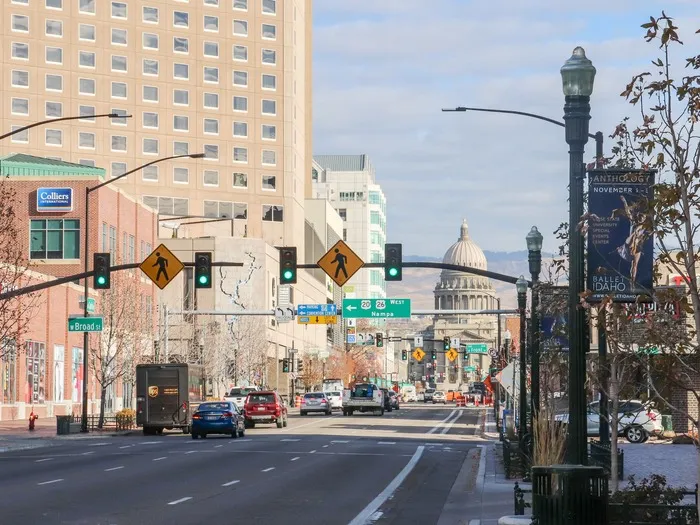
What does the location of Yellowstone National Park offer?
Yellowstone is situated on the Yellowstone Caldera, North America’s largest supervolcano, leading to a high concentration of geothermal features. It hosts over half of the world’s geysers and hydrothermal sites. Visitors can see Old Faithful erupt, admire the colors of the Grand Prismatic Spring, and observe mud pots in the Lower Geyser Basin. This geothermal activity enhances the park’s stunning visuals and supports its unique ecosystems.
Being part of the Greater Yellowstone Ecosystem, the largest intact ecosystem in the northern temperate zone, Yellowstone offers various habitats. It includes subalpine forests, meadows, rivers, and lakes that support diverse wildlife. Visitors may encounter bison, elk, grizzly bears, and wolves in their natural environments. The park’s varied landscapes are ideal for wildlife viewing, especially in Lamar Valley and Hayden Valley, where large herds are often seen.
Yellowstone National Park has five main entrances, each granting access to different areas. The West Entrance, near West Yellowstone, Montana, is the busiest, providing quick access to many geothermal attractions. The South Entrance connects visitors to both Yellowstone and Grand Teton National Park. The Northeast Entrance leads to the northern sections of the park, while the North Entrance in Montana is open year-round, including winter. Each entrance features scenic routes and access to trails, viewpoints, and attractions, enhancing the visitor experience.
Read More: How Many Days Need For Yellowstone National Park?
Map of Yellowstone National Park
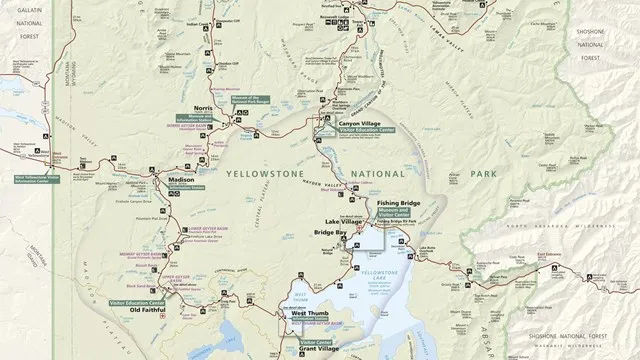
FAQs about “What state is Yellowstone National Park in?”
What is the best time to visit Yellowstone?
The best time to visit Yellowstone National Park depends on your interests and preferences. Here’s a quick overview of the best times for different activities:
- Summer (June to August): Best for camping, hiking, and wildlife viewing. Crowds are highest during this peak season.
- Fall (September to October): Best for fall foliage, elk rut, and fewer crowds. Many services close by late September/early October.
- Winter (November to March): Best for avoiding crowds, wildlife viewing, and winter activities like cross-country skiing and snowmobiling. Most roads are closed to regular vehicles.
- Spring (April to June): Best for baby animal sightings, but crowds are lighter in June. Roads begin opening in late April.
>> List of Yellowstone National Park Animals: Wildlife Encounters
How much does it cost to get into Yellowstone National Park?
As of 2023, the entrance fee for Yellowstone National Park is $35 per vehicle, which is valid for seven days. This fee covers both Yellowstone and Grand Teton National Parks. Visitors can also purchase an annual pass for $70, which provides unlimited entry to both parks for one year.
What is so special about Yellowstone National Park?
Yellowstone National Park is special for many reasons, including its vast size, diverse landscapes, and unique geothermal features. The park is home to the largest concentration of wildlife in the lower 48 states, making it a prime destination for wildlife enthusiasts. Additionally, Yellowstone is the world’s first national park, established in 1872, and is known for its stunning natural beauty and rich history.

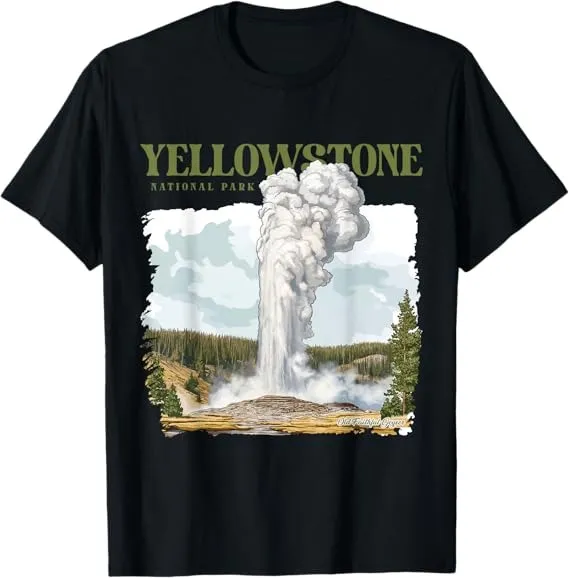
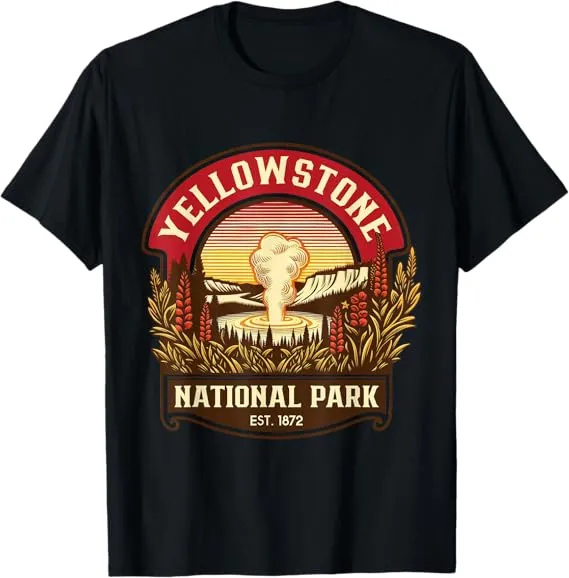
Conclusion
So, there you have it! The answer to the question “What state is Yellowstone National Park in? or Where is yellowstone?” is a bit more nuanced than you might have thought. While the park technically spills over into Idaho and Montana, Wyoming proudly holds the title as the primary home to this natural wonder, boasting the vast majority of its awe-inspiring landscape.
As a seasoned traveler, I can tell you that experiencing Yellowstone is like stepping into another world. Whether you’re witnessing the eruption of Old Faithful, marveling at the vibrant colors of Grand Prismatic Spring, or hiking through its pristine wilderness, Yellowstone leaves an indelible mark on the soul. And while knowing which state you’re in is certainly helpful for planning your trip, the real magic lies in the raw, untamed beauty that transcends state lines.
Read More:
